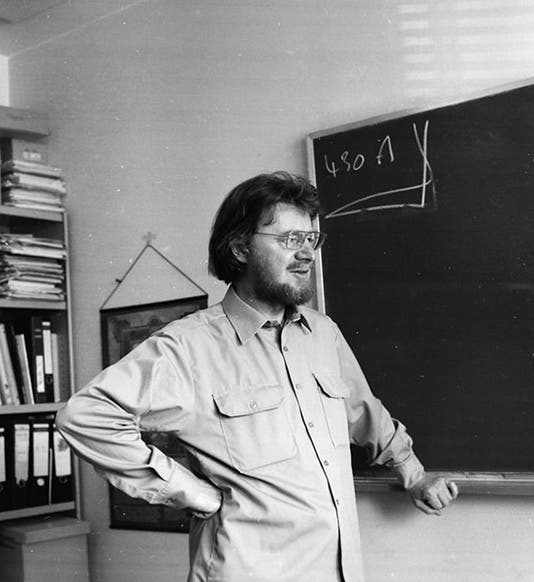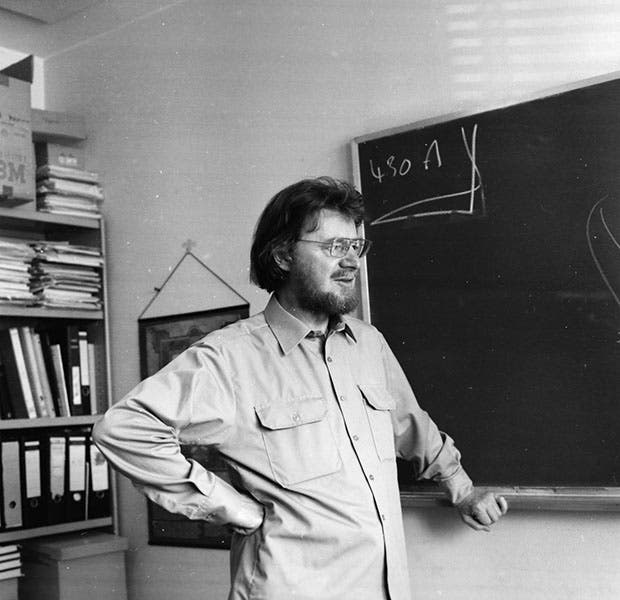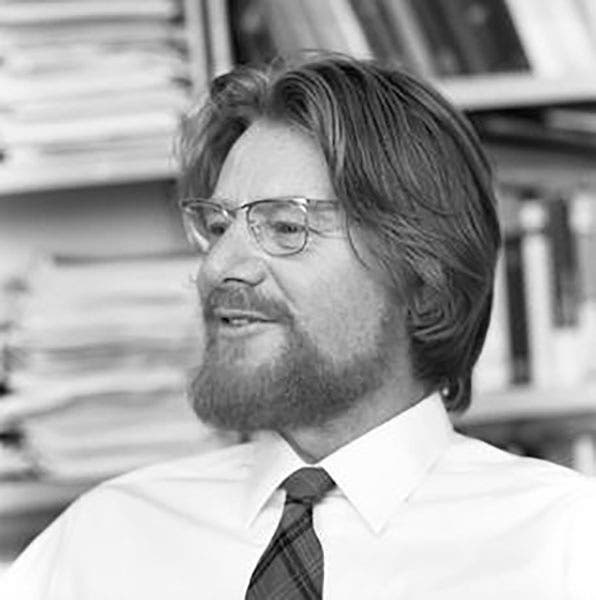Scientist of the Day - John Stewart Bell
John Stewart Bell, an Irish physicist, was born July 28, 1928. He studied physics at Queen's University, Belfast, and then did graduate work at the University of Birmingham. After a brief stint at Harwell Lab, he took a position working for CERN in Geneva. He got paid for designing particle accelerators, as did his wife, Mary. But in his off-time, Bell thought long and hard about quantum mechanics.
Quantum mechanics, as developed by Erwin Schrödinger, Werner Heisenberg, Wolfgang Pauli, Niels Bohr, and others in the 1920s, revealed a very strange world, quite unlike the one inhabited by those brought up on Newtonian physics and Maxwellian electrodynamics. According to quantum mechanics, everything is quantized, which means that the world is made up of small, discontinuous bits; even light consists of discrete photons, small packets of energy. The picture of the atom as a tiny solar system was gone; an atom was now a blur of energy, with the electrons no longer in a particular place. You could nail down the position of a particle if you wanted to, but then its motion (momentum) became unknowable with any precision, and if you were to determine its momentum, then you no longer had any idea where it was. Predictions about the behavior of atomic and nuclear particles was a matter of probabilities, not certainty. The act of observation now played quite a different role; it seemed that the properties of particles were actually determined by the act of observation, and those properties did not exist until observed. This was very much at odds with the notion of realism, that things really do have properties, whether we observe them or not.
Albert Einstein was not happy with quantum mechanics, and he had many long discussions with Niels Bohr about whether "God plays dice with the universe." In 1935, Einstein, with two colleagues, Boris Podolsky and Nathan Rosen, wrote a paper about "entangled particles." Two particles are entangled when the quantum state of one depends on the other, such as a pair of electrons emitted by an atom, which necessarily have opposite "spin", as one of the quantum properties is called. According to quantum mechanics, even if these two electrons are widely separated, the determination of the state of one particle instantly determines the state of the other.
Entangled particles were at odds with something called "locality," which says that an event can only propagate effects at the speed of light, so observation of the state of one particle cannot affect the the state of a non-local particle. The Einstein-Podolsky-Rosen (EPR) paper was called "Can Quantum-Mechanical Description of Physical Reality be Considered Complete?". They considered the case of two entangled particles, now widely separated, and whether or not an observation of one could immediately determine the state of the other. They concluded that this could be done only if there were "hidden variables," unknown properties that contribute to the behavior of particles. If so, then quantum mechanics, not incorporating those hidden variables, is incomplete.
In 1964, Bell published a short paper in a very obscure journal. The paper was called; “On the Einstein Podolsky Rosen paradox,” and it was published in the third issue of the first volume of Physics. The journal was not widely distributed and went belly-up after a few more issues. We do not have any issues of Physics in our library (but you can read the original of Bell’s paper online here). The proper place for such a paper would have been Physical Review Letters, but that journal assessed page charges, which Bell didn’t want his institution to have to pay, and it is said that Bell chose Physics because not only did they not require page charges, but they actually paid a small sum for each contributed article (money that Bell immediately had to shell out to buy offprints, which the journal did not provide).
Anyway, in his paper, Bell was able to prove that any hidden-variable theory about entangled particles must necessarily be non-local (Bell’s theorem). The observation of one entangled particle can indeed instantly affect the state of another, no matter how far away it is. Even better, Bell proposed a variety of experiments to test for non-locality. It took a while for such experiments to be performed, because no one read Bell's paper or heard of Bell's theorem for about five years. But when word finally got out, in the early 1970s, the experiments were performed, and without exception, showed that in such experiments, Bell's theorem was upheld. Quantum mechanics describes effects that are non-local and non-realist, and it is complete. Einstein was wrong.
Bell’s theorem and quantum entanglement are hard to explain in a forum like this, and if you wonder why I make a feeble attempt to do so, the answer is simple. In the opinion of many, Bell’s theorem is the most important contribution to quantum mechanics (some say to physics as a whole) made in the entire 20th century, since it confirms the nature of the quantum world. It has been said that we live in the age of a Second Quantum Revolution, one that was begun by Bell. Experiments to test Bell’s theorem have been performed thousands of times, and Bell’s theorem has been confirmed in every instance. All those “quantum” things that you have heard about, such as quantum computing and quantum cryptography, are the direct results of the work of John Stewart Bell. He would surely have received a Nobel Prize, had he not died, unexpectedly, in 1990, at the age of 62. He deserves to be as widely known as Einstein. Perhaps, in a hundred years, he will be so.
For those wishing to learn more about Bell (and perhaps less about quantum mechanics), there is a long chapter on Bell by one of my favorite science essayists, Jeremy Bernstein, who knew Bell for 30 years, in his book, Quantum Profiles (Princeton Univ. Pr., 1991).
William B. Ashworth, Jr., Consultant for the History of Science, Linda Hall Library and Associate Professor emeritus, Department of History, University of Missouri-Kansas City. Comments or corrections are welcome; please direct to ashworthw@umkc.edu.








